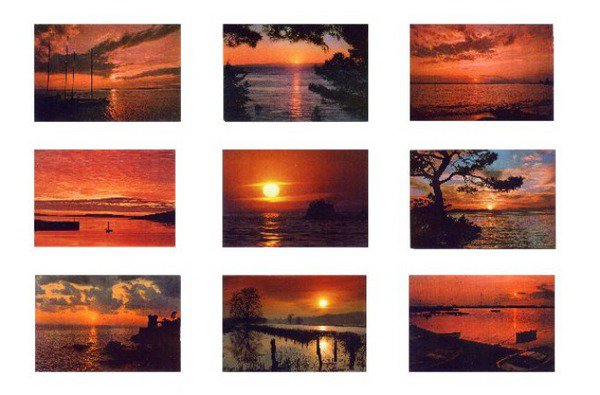The Believable Lie
dal 19/7/2014 al 29/11/2014
Segnalato da
19/7/2014
The Believable Lie
Cleveland Museum of Art, Cleveland
Heinecken, Polke, and Feldmann. The exhibition focuses on relationships among the photographic work of three artists active during the 1970s that drew on ideas of surrealist/Dada culture of the 1920s and 1930s and influenced succeeding generations of photographers and media artists.

This exhibition focuses on relationships among the photographic work of three artists active during the 1970s that drew on ideas of surrealist/Dada culture of the 1920s and 1930s and influenced succeeding generations of photographers and media artists. The artists hail from different backgrounds: two Germans and one Los Angeles native who all matured in the decades following World War II. This is the first exhibition to bring photographic work by these artists together. Each embraced photography as one element of an artistic practice guided as much by literature, philosophy, and an attention to popular culture as by classical formal concerns of the medium. Yet, photographic process and context remained important to them.
A corrective to the egocentric model of the 1950s artist was due; hence the photograph, pervasive and democratic in its accessibility, became a lightning rod for artists seeking new forms of expression. The Vietnam era provoked a certain skepticism toward the media by artists in America and Europe that extended into a prolonged investigation of the photograph as truth, questioning its documentary nature. The barrage of popular imagery—from lush magazines to color television—became fodder for work aimed at exposing the cultural hegemony. As a time marked by underground political dissent, the 1970s was a decade when artists began working small, working privately, and working beyond the boundaries of commercial gallery system.
Appropriation, collage, serial narrative, the elevation of the anonymous photograph: each artist explored these concepts in increasingly sophisticated work throughout the decade. Strategies that emerged earlier in the circles of the surrealists and New Vision photographers—the untutored “photographic mistake,” photography as a form of literary pointing—adopted by the artists in this exhibition have subsequently been absorbed by the contemporary generation using photography as conceptual art, from Gabriel Orozco to Hank Willis Thomas.
Although the three artists here each have significant exhibition histories, this will be the first exhibition to bring their photographic work together, and will shed light on the iconographic and formal choices they made when photography ascended into the contemporary art arena.
The Cleveland Museum of Art is generously funded by Cuyahoga County residents through Cuyahoga Arts and Culture. The Ohio Arts Council helped fund this exhibition with state tax dollars to encourage economic growth, educational excellence, and cultural enrichment for all Ohioans.
Image: Sunset, mid-1970s. Hans-Peter Feldmann (German, b. 1941). Color Xeroxes; 105.4 x 121.9 cm (overall). © Hans-Peter Feldmann, courtesy 303 Gallery, New York. HPF 131.
Caroline Guscott
Communications Manager
The Cleveland Museum of Art
11150 East Boulevard
Cleveland, Ohio 44106-1797
216-707-2261 (telephone)
216-707-6521 (fax)
cguscott [at] clevelandart [dot] org
Saeko Yamamoto
Communications Manager
The Cleveland Museum of Art
11150 East Boulevard
Cleveland, Ohio 44106-1797
216-707-6898 (telephone)
216-707-6521 (fax)
syamamoto@clevelandart.org
Cleveland Museum of Art
11150 East Boulevard - Cleveland, Ohio 44106
Tuesday, Thursday, Saturday, Sunday 10:00 a.m.–5:00 p.m.
Wednesday, Friday 10:00 a.m.–9:00 p.m.
Closed Monday
Free General Admission



